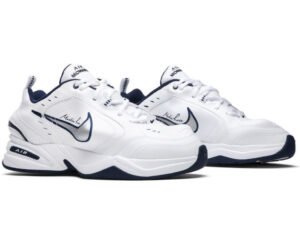Reinvention of British Tailoring Through Ethical
Luxe, as it was once known, is in the midst of a reckoning. No longer defined solely by scarcity, cost, or opulence, true haute in the modern era hinges on values—integrity of process, environmental consciousness, and social responsibility. At the heart of this evolution stands Knatchbull, a quiet but resolute disruptor situated on the storied Savile Row. Once the exclusive terrain of heritage tailoring and aristocratic tradition, this Mayfair address now hosts a brand intent on rewriting the sartorial code of the 21st century. For Knatchbull, tailoring is not only a practice of measurement and form, but a philosophical act—an intersection where aesthetics and ethics meet under the banner of what it calls Conscious Luxury.
The manifesto is unambiguous: Knatchbull isn’t merely producing suits. It is crafting a sustainable future for luxury fashion, rooted in the belief that real elegance is born from responsibility.
The New Gentleman: Ethics as Elegance
In an era increasingly shaped by climate anxiety, overproduction, and the social impact of consumption, Knatchbull proposes a wardrobe model that reclaims dignity through conscious choice. Its suits are not fast fixes or seasonal statements. They are long-form investments—pieces tailored not just to a body, but to an individual’s convictions.
Gone is the notion of haute as guiltless indulgence. In its place, Knatchbull offers garments that speak to accountability. The modern gentleman, as imagined here, is no longer defined by lineage or leisure, but by his ethical orientation. Dressing well means dressing wisely. A suit, then, is not just a mark of occasion, but a statement of alignment: with planet, craft, and principle.
Material Intelligence: Fabric as Future
Knatchbull’s commitment to sustainability begins at the source: materials. Working with traceable wool, organic fabric, and plant-based linings, the house ensures that its cloth choices carry environmental clarity. Every bolt of cloth is scrutinized not just for drape and luster, but for origin, impact, and renewability.
Where conventional tailoring might prize the feel of superfine merino or the sheen of silk without question, Knatchbull interrogates the supply chain. Who raised the sheep? What energy powered the mill? Was the dyeing process water-safe? These questions are not externalities—they are the foundation of the garment’s value.
Knatchbull’s wool is often sourced from regenerative farms in the UK and Europe, supporting soil health and biodiversity. Its cotton partners must meet GOTS (Global Organic Textile Standard) certification. Even interfacings—typically overlooked structural layers—are plant-derived or biodegradable, reducing chemical dependency and landfill pressure.
In the Knatchbull paradigm, a luxury fabric must not only feel extraordinary—it must behave responsibly across its entire lifecycle.
Craft With Conscience: Tailoring Reimagined
Savile Row is synonymous with craftsmanship, but craftsmanship alone is no longer sufficient. What Knatchbull introduces is conscious craft: an artisanal process that respects the environment, honors labor, and refuses excess.
Each suit is made-to-order or made-to-measure, avoiding overstock and minimizing waste. Offcuts are reused, repurposed, or recycled. Tailors are paid not by the speed of their stitch, but by the thoroughness of their construction. The result is a slower suit, but a smarter one—where longevity is stitched into every seam and integrity woven into every dart.
Moreover, Knatchbull recognizes the human face of fashion. In an industry notorious for subcontracting and labor invisibility, the brand ensures that every maker, cutter, and finisher is acknowledged and fairly compensated. Sustainability, in this vision, is inseparable from labor justice.
The Aesthetics of Restraint: Style Without Waste
Knatchbull’s design language is not radical in silhouette—it is radical in restraint. The house offers a contemporary British profile: soft shoulders, balanced lapels, precise but not severe fits. The point is not flamboyance or trend, but enduring relevance.
This is not tailoring for the Instagram carousel. It is tailoring for real life—subtle, sculptural, and self-assured. Jackets may come unlined to reduce material use; trousers are often cut with a single pleat to improve wearability and reduce fabric tension. Buttons are made from corozo nuts, not plastic. Pocket bags use organic cotton. Even hangers are made from recycled pulp.
Every design choice, no matter how minute, has been considered through the lens of lifecycle. What impact does it have? Can it be repaired? Will it age well? Knatchbull’s aesthetic philosophy rejects waste disguised as luxury. Instead, it commits to a minimalism enriched by depth—depth of story, depth of principle.
The Manifesto as Model
“Our Manifesto” is not just branding. It is a framework. For Knatchbull, the manifesto functions as a living contract—an articulation of values that must be upheld not only in studio meetings but in daily operations, customer interactions, and supply chain choices.
The principles outlined—ethical sourcing, environmental stewardship, social equity—are not aspirational. They are active. Each suit that leaves Knatchbull’s studio is a document of those ideals. Tags include information about fabric provenance and ecological impact. Customers are invited into the process—given options to personalize responsibly, repair instead of replace, and recycle at garment’s end.
This isn’t merely transparency. It’s traceability with purpose. In a fashion world awash with greenwashing and vague sustainability claims, Knatchbull opts for quantifiable action.
Community and Continuity: Beyond the Garment
Knatchbull’s work doesn’t end at the point of sale. Its vision includes education and community engagement. The brand has partnered with tailoring schools to train the next generation of ethical makers. It offers apprenticeships and mentorships for young artisans from underrepresented backgrounds. Events on Savile Row blend the formal with the participatory—discussions on regenerative agriculture, pop-up tailoring demonstrations, panels on circular design systems.
In doing so, Knatchbull extends the life of its garments through dialogue. A suit is no longer just a product. It becomes a node in a larger conversation—about class, climate, aesthetics, and agency.
The long-term ambition? A new culture of dress. One that doesn’t glorify excess or status, but values longevity, care, and meaning. In Knatchbull’s words: to dress with purpose and style.
Global Values, Local Action
Though grounded in British heritage, Knatchbull is not provincial. It sees itself as part of a global shift—a broader momentum in opulence away from extraction and opacity, and toward responsibility and regeneration.
From sourcing to shipping, the brand aligns itself with cross-border coalitions committed to decarbonization, fair labor, and biodiversity. Knatchbull’s (carbon impact) is measured annually, offset only after meaningful reductions. Packaging is plastic-free and compostable. International clients are offered repair and alteration credits rather than pressured into new purchases.
In a global economy driven by speed and scale, Knatchbull doubles down on the local: on knowing your maker, on walking into a studio rather than a warehouse, on listening to fabric and hand before algorithm.
A Legacy Rewritten
Savile Row has, for centuries, represented an elite form of dressing. For many, it is a symbol of exclusion, tradition, and unchanging hierarchy. Knatchbull does not erase that legacy—but it rewrites it.
It keeps the rigor, the craft, the measured approach—but reorients it toward inclusion, ecology, and progressive identity. No longer reserved for the privileged few, the suit becomes an open platform. You don’t inherit this kind of luxury—you choose it. And in choosing it, you participate in a system of care.
This is not simply about looking good. It’s about living well—and ensuring that your garments live well, too.
No comments yet.








